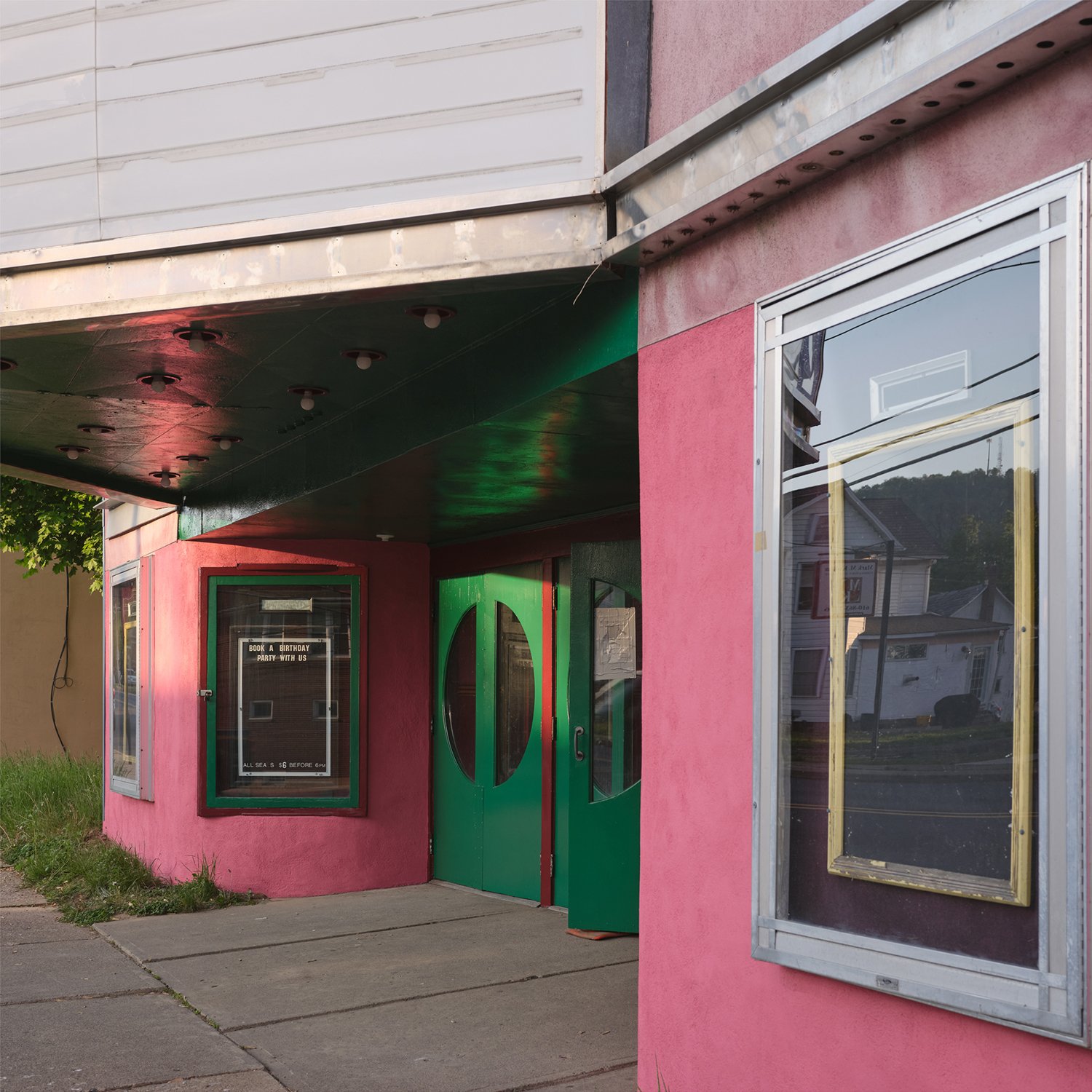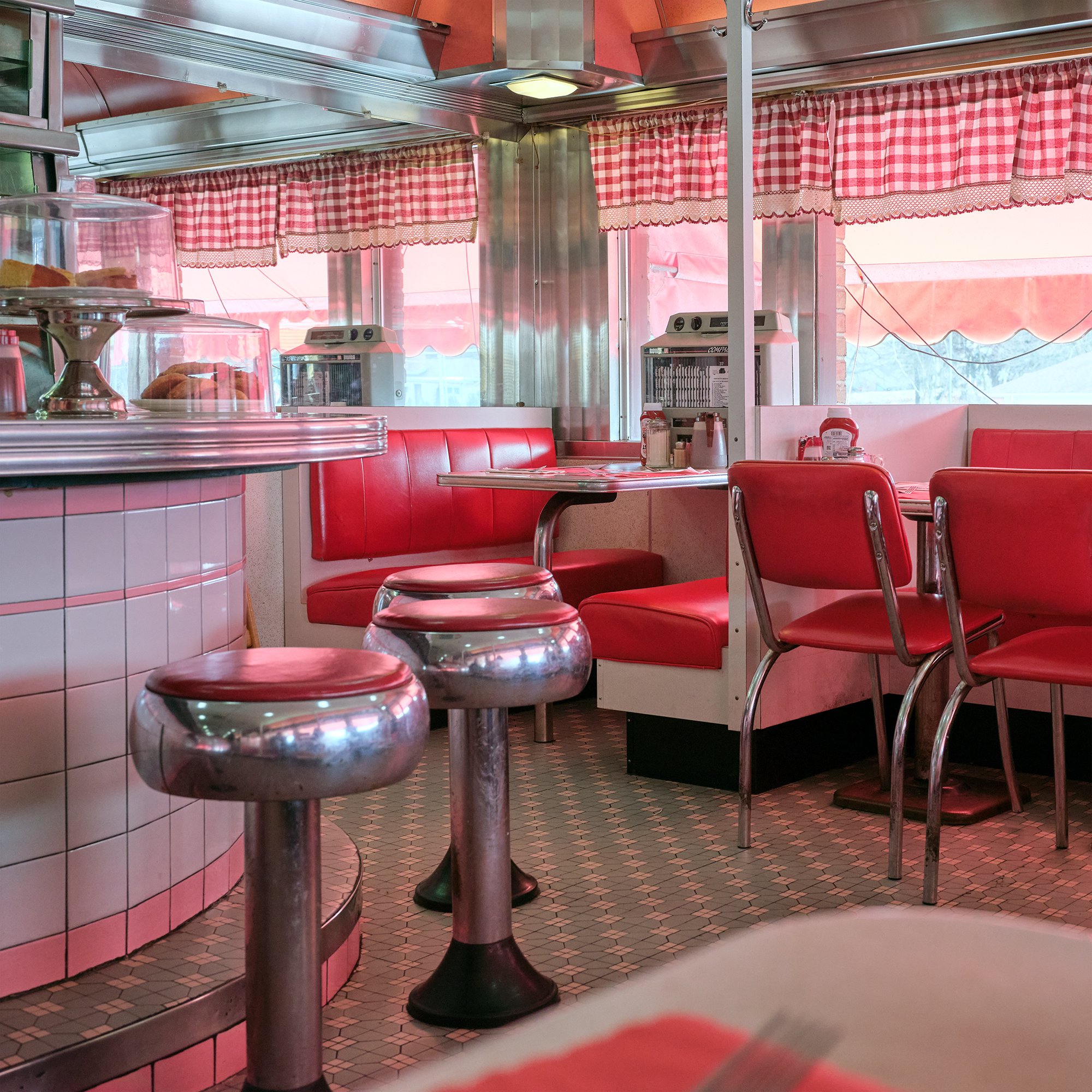Touring Exhibition:
Temple Contemporary Gallery, Temple University, Philadelphia, PA, Dec. 2021
Freedman Gallery, Albright College, Reading, PA, Aug. 30-Oct.6, 2022
The Banana Factory, Bethlehem, PA, Oct. 24, 2022- Jan. 22, 2023
Martin Art Gallery, Muhlenberg College, Allentown, PA, March 4-April 12, 2024
Please scroll down for my artist statement.
Select Press
09/2022: Lomography Magazine, Documenting American Artifacts: Leah Frances on Her Latest Book and Exhibition
01/2022: BuzzFeed, “These Photos Of America’s Best Diners Are Americana Without The Nostalgia”
01/2022: BuzzFeed, “8 Photo Stories That Will Challenge Your View Of The World”
12/2021: Broad, VISUAL CULTURE FOR THE DIGITAL AGE, “Leah Frances - Things Were Never Normal”
12/2021: Magpies Magazine, “Things Were Never Normal”
09/2021: Carnegie Museum of Art, online journal, Storyboard. “Leah Frances: Things Were Never Normal”
Things Were Never Normal — Artist Statement
On March 11th, 2021, President Biden announced “the goal of getting the nation closer to normal by July 4th.”
I made these photographs during the Trump presidency and the post-Trump era, with one coast under water and the other battling unprecedented forest fires — the climate crisis destabilizing life as we know it; with anti-abortion vigilantes empowered, by law; George Floyd murdered on a Minneapolis street corner; and the storming of the Capitol by groups including far-right militants and white supremacists. As of May 3, 2023 (the expiration of the federal declaration of the Covid-19 public health emergency), 1,131,729 Americans had died of Covid-19. Much is missing from this list, yet “America is back.”
This exhibition highlights “third spaces”: components of an area’s social infrastructure, communal spaces outside of home and work such as taverns, church picnics, diners, restaurants, and movie theaters — sites where we might gather, if we could agree. Many of these venues have been devastated by the coronavirus pandemic or by extreme weather events, both of which have become politicized. My photographs are mostly empty of people, yet pushed-back chairs or half-finished meals on tables show that life did occur here. Pictured are scenes where things once happened, never happened, or might still happen. Yet let us not be buried in collective amnesia: Things were never “normal.”
The locations I chose are particular. Left behind by declining economies, they also reference an idealized American mythology. Persistent in popular visual culture, from Edward Hopper’s Nighthawks to Gary Marshall’s Happy Days and Tony’s last meal in The Sopranos (David Chase), we’ve all absorbed, for instance, the diner as a recurring motif. Today, in a deeply polarized United States, scenes such as these are often associated with nationalism and nostalgia, mobilized for political use, and linked with characterizations of authenticity. In his book, Landscape as Weapon: Cultures of Exhaustion and Refusal, John Beck wrote, “What is disturbing about the tendency on the Right ... to insist upon a falsified version of the national past as a lost utopia is that this version of history is currently serving less as a comfort and more as a model for the future.”
Actively using photography to explore the residue of time and human effort, I create portraits of place, mindful of the individuals who have been there before and may be there again. Imaginary one-to-one conversations with these ghosts, so to speak, allow me to invest in the possibility that within this divided nation, we might, one day, understand and respect each other. I harness light to grasp at moments of joy in complicated environments — an attempt to pull myself out of today’s prevailing us-versus-them mentality and the fear, anxiety, anger, confusion, and disappointment I have been feeling. If half the country is engaged in backward-looking, what are they seeing? With these images—my attempts to go to, and document,the things themselves — I hope to create an opening for deep looking and the exploration of multiple layers of meaning, an encounter with complex histories rather than one-dimensional, familiar tropes. — Leah
Essay, by Yani Kong
Leah Frances’s photography is here to challenge our collective nostalgia. If anything, nostalgia is her medium but she wields it as a method to show what is there. The works in this show were made in a moment that, for some, signaled political devastation: the presidency of Donald Trump; extreme climate crises; a global pandemic; a raging race war; a political insurrection. There are many for whom nostalgia has become a politicized battle cry — a desire for a perceived ‘greatness’ that could be returned to. Others from the opposite spectrum may also long for a return to something else. People agree the system is broken. No one agrees what needs fixing.
Because she is Canadian born, Frances has fashioned her gaze as a loving outside observer. While her earlier work, “American Squares,” presents a warmer view of America, her growth as an artist demonstrates her very clear reckoning with the country as it is. Whereas nostalgic motifs like the diner, vintage signage, and the soda shoppe carry the falsities of representation like a kind of baggage, Frances wants her viewers to see what she sees.
In her new body of work, mostly shot in Pennsylvania, the artist returns in a way to the sites that sparked her fascination with America. “Sites we might gather,” she writes, “if we could agree.” Now the diner is empty of people, half the booths are cordoned off to promote social distancing. The theatre has closed for good. The once cheery signage of the corner store has all but rusted away. Almost no one is on the street.
Her sites of focus are all places that have come to symbolize a lost utopia — they are (or they were) the ‘again’ emblazoned on the red hat. Perhaps the diner was always at the core of America’s greatness, but now it too is a scene of alienation — a record of the country’s divide.
I’m Canadian too. For outsiders like Frances and me, I can say that what we have known about America we’ve learned by paying attention to the cities that flank the country from all sides. In our conversations together, Frances reminds me that there just isn’t a wide understanding for American life outside of New York or Portland, Los Angeles or Austin. Now a resident of Easton, PA, Frances witnesses the life that occurs in the small town, the rural areas, the Rust Belt. She wants us to see these places as very much alive but she also wants us to understand that their vibrancy is dwindling.
No doubt, there is a bleak feeling that runs through the works on view, but Frances manages to resist the lustre of total despair. I invite you to explore the sense of light she conveys in each of her portraits: broad, soft, golden hued and expansive. Photography is, for her, a tool to find the light, to grasp it, to document that it was there. It is a strategy that allows her to unfold what is inside the American myth and to let her see what is still valuable, what can be renewed amid otherwise devastation.
In the town of Hazelton, Pennsylvania, there is a luncheonette famous for their Jimmy Dogs. In Frances’s photograph, the counter is set to function. After the lunch rush, crumbs are strewn about; dried gravy crusts the sides of dishes; cords and containers are everywhere. It is an ordinary scene in the life of a diner, but she finds something singular.
Each element in the photograph teems with human life. In the evidence of the undone, Frances says, it shows all the things that have happened, it points to some things that could happen next, and in what the image doesn’t show, it contains the things that may never occur. The foam cups that belong to Nancy and Flo and Verna are probably there to collect tips, but in calling the women by name, the cups become vessels of potential. What does Verna think about her job? Does she like where she is? How much can her cup hold?
In a political climate defined by intense binaries, she recognizes that her photographic subjects are difficult to empathize with. What she finds is something more complicated than the liberal/conservative divide. Frances’s task as an artist is to bear witness to the undoing of American nostalgia.
Yani Kong is a writer, editor, and scholar of contemporary art in Vancouver, Canada.















































